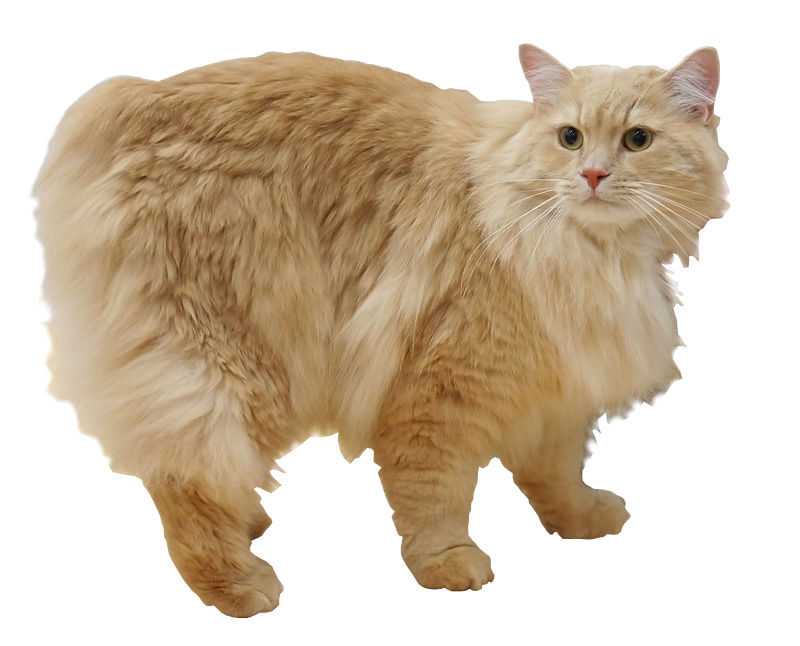Though some people believe that the Manx cat lost its tail when Noah closed the Ark doors a little too quickly, history tells a different tale. The Manx originated on the Isle of Man, but its ancestors probably arrived by ship from England, Wales, or even Scotland. The genetic mutation that created the unique tail of the Manx occurred on the Isle of Man at least as early as 1810, but there is some evidence to suggest that the tailless cats were running around as early as 1750. We may never really know for sure.
The mutation that caused kittens to be born without the vertebrae of a normal tail is likely the result of inbreeding. The Isle of Man is fairly small, after all, and there were relatively few cats for the breed to develop. In time, some of these tailless cats grew long hair, others remained shorthaired. The shorthaired kittens were labeled Manx, while the longhaired ones received the name of Cymric. The only difference between these two breeds is the length of hair.
The International Cat Association (TICA) recognized both the Manx and the Cymric, granting them championship status, in June of 1979.
The Appearance of the Manx and Cymric
Since the two cats are identical except for coat length, there is little point in describing the same characteristics twice. Both cats are found in all patterns and colors, some more desirable than others. Bold colors and dramatic markings are best, but any color or pattern is acceptable in this versatile breed.
Both versions of this cat have thick coats, giving them a round appearance. The Manx has a short, glossy coat with a glossy appearance. The Cymric should have longer hair that is both silky and plush. A neck ruff and fluffy breeches are required in the longhaired Cymric.
The Cymric and the Manx are both medium in size with a rounded body and head. They resemble furry little bowling bowls and are often referred to as such with great affection. Though they may appear large with their fluffy fur, they are typically no more than 10 pounds.
Despite their reputation for having no tails, these breeds are not all tailless. The tail may be stubby and may even have a slight curl. Even cats with no tails at all have all the nerve endings of a tail, so take care when handling the hindquarters of either breed.
The Personality of the Manx and Cymric
Both the Cymric and the Manx are gentle cats with a sweet and playful disposition. Because these cats are affectionate and quite dependent on people for company, they should not be left alone for long periods. They're not cats you can leave for a week while you go off on vacation, so take this into account.
These cats are not generally great with children and other pets cause of their sensitive tail area. They are amusing for adults, however, and will indulge in a game of fetch if properly enticed. You might even find your Manx or Cymric burying their toys rather like a dog. Neither breed is overly loud, but they will engage you in conversation with a soft thrilling sound if you listen long enough.
If you're looking for a quiet cat who will crave your company, the Manx or the Cymric may be for you. Both breeds require little grooming, just a weekly brushing to keep the coat soft and healthy, so the maintenance are nearly identical.

No comments:
Post a Comment